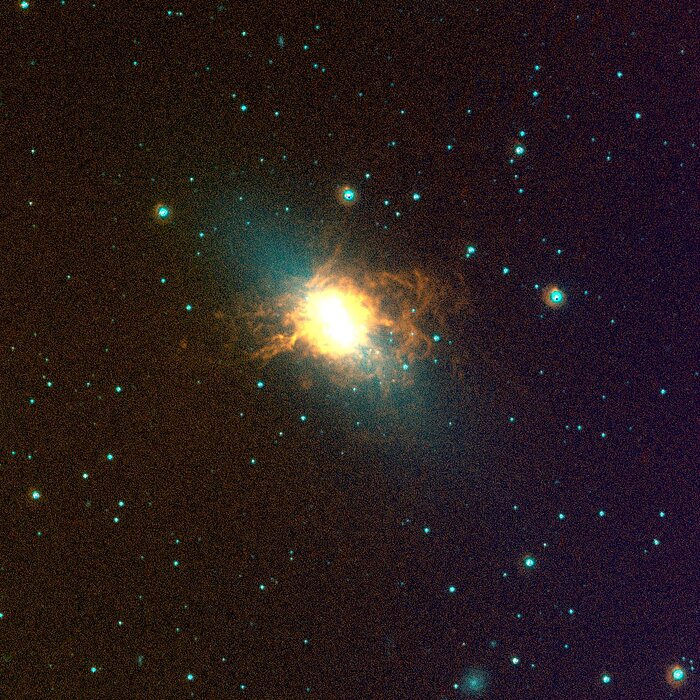NGC 5253, SINGG Survey
Gas-rich galaxies display a wide range of structures and properties, but one thing they all seem to have are some newly formed stars. Images from the Survey for Ionization in Neutral Gas Galaxies (SINGG), an NOAO Survey Program (obtained with the CTIO 1.5m telescope), are designed to highlight areas of star formation in gas rich galaxies. Galaxies with intense star formation and low mass are most able to eject their gas in a galactic wind. This Blue Compact Dwarf (BCD) galaxy has a very strong outflow resulting in a spectacular display of galactic wind. The image is displayed so that stars have a cyan-blue appearance, while ionized hydrogen (H-alpha) emission appears orange-red to yellow. The H-alpha emission marks where the gas in the galaxies has been stripped of electrons, and is now recombining. It takes very hot O stars to ionize the gas; these stars have very short lifetimes (a few million years). As a result, red tones in these images typically mark the location of newly formed hot stars. Gerhardt Meurer of The Johns Hopkins University, Baltimore, MD, is the principal investigator for SINGG. For more information, see: http://sungg.pha.jhu.edu/
Credit:The SINGG Survey Team and NOIRLab/NSF/AURA/
About the Image
| Id: | noao-j1339-31_crop1 |
| Type: | Observation |
| Release date: | June 30, 2020, 9:53 p.m. |
| Size: | 1200 x 1200 px |
About the Object
Wallpapers
Coordinates
| Position (RA): | 13 39 53.11 |
| Position (Dec): | -31° 37' 27.62" |
| Field of view: | 8.64 x 8.64 arcminutes |
| Orientation: | North is 0.1° right of vertical |

